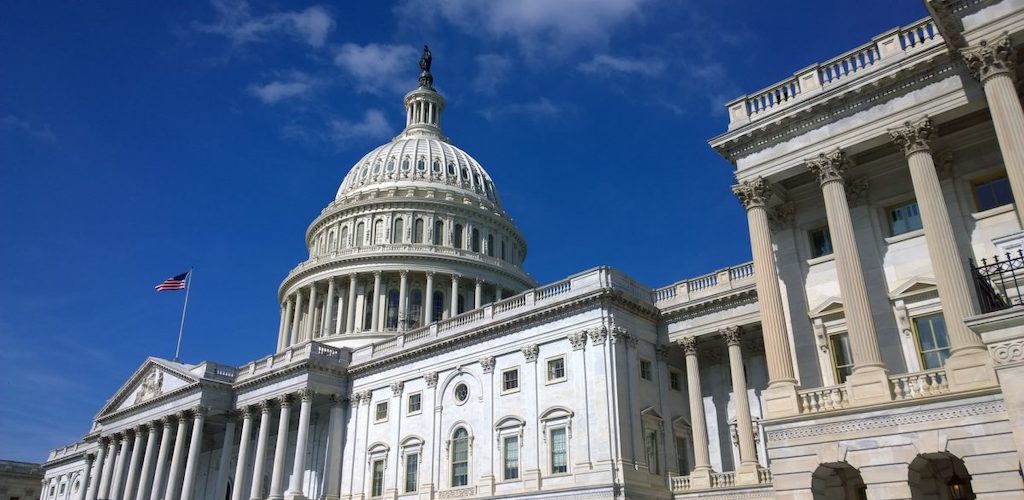(Americas) Decarbonization Legislation Introduced to Congress

By Malcolm Ramsay
Proposed legislation on decarbonization, introduced in the U.S. Congress this month, may have considerable impacts on breakbulk transport and port authorities as funding is diverted to cleaner alternatives.
The Climate Leadership and Environmental Action for our Nation (CLEAN) Future Act was debated in the House of Representatives this week following introduction by the House Energy and Commerce Committee at the start of March, and outlines plans to decarbonize multiple sectors of the U.S. economy.
“The climate crisis is one of the greatest challenges of our lifetime, but it also presents one of the greatest opportunities to empower American workers with new, good paying jobs and return our economy to a position of strength after a long, dark year of historic job losses and pain,” said Rep. Frank Pallone, D-NJ, Energy and Commerce Committee Chairman.
“The act is just the U.S. implementation of the recommendations of the United Nations Intergovernmental Panel on Climate Change, comparable to legislation we see in Europe,” said Johan Wulder, manager QHSE of breakbulk operator Jumbo. "Currently, Jumbo is preparing for these, as is the rest of the industry, taking responsibility to reduce CO2. Several industry initiatives at the European and global level exist to develop the technology required."
Under the planned legislation, the government would commit to achieving a 50 percent reduction in greenhouse gas, or GHG, emissions from 2005 levels by no later than 2030 and a 100 percent clean economy by no later than 2050. The legislation also includes both sector-specific and economy-wide solutions to achieve these goals, authorizing US$565 billion over 10 years to enable deep decarbonization.
The bill also updates financing programs to expand domestic manufacturing of advanced automotive technologies and will establish an Environmental Protection Agency grant program to decarbonize and electrify ports around the country, reducing air pollution that disproportionately harms frontline communities.
“The bill includes substantial investments in transportation electrification, including through grants and rebates to deploy electric vehicles and charging stations, zero-emissions school buses, and formally authorizing a Clean Cities Coalition Program,” a spokesperson for the Committee on Energy and Commerce said.
Transport Overhaul
One of the key sectors of focus for the proposed legislation will be the transport sector, where investment in new infrastructure is expected to drive a range of new opportunities. As the greatest source of greenhouse gas emissions, the transport sector could face a radical shift in infrastructure as new clean transport systems are required and mass electrification takes place.
Jumbo's Wulder said he believes “the shipping industry will be seriously challenged to reach these goals as the requirements have to be developed and implemented within the lifetime of a ship." That means a vessel built today should be able to operate with zero emissions through it's entire lifetime.
However, “the industry is taking this challenge proactively ... The ambition is present,” he added.
Brody Garland, government affairs analyst at the law firm of K&L Gates, said: “The CLEAN Future Act would have massive impacts on every sector of the economy, including several prominent changes to the regulation of the transportation industry. The bill would target transportation emissions (the largest source of greenhouse gas pollution) with sizable investments in transportation electrification, new federal grant programs, and various other incentives to accelerate the transition to a zero-emissions future.”
Electrification
Major new grant support would support breakbulk operators in switching to electric equipment. The reintroduction of the Diesel Emissions Reductions Act National Grants Program at US$500 million/year, may also drive change in fuelling for breakbulk vehicles and heavy-lift equipment. In addition to the US$500 million allocated for electric vehicle supply equipment, billions of dollars will be allocated to expand domestic manufacturing of advanced vehicles.
In the port sector, investment in improved ground support equipment at ports and electric vehicle charging infrastructure will be supported by a program at US$2 billion/year in FY22-31, with an additional US$2.5 billion/year for large-scale projects to electrify the transportation sector.
A new EPA grant program aimed at reducing GHG emissions and other air pollution at U.S. ports will support the development of climate action plans and drive new measures to reduce emissions from port infrastructure and operations. Funding will be made available for the purchase and installation of zero-emission equipment and technology however the used of grant funding to purchase fully automated cargo-handling equipment would not be permitted.
“The grant program would also set stringent labor standards and metrics by which EPA must prioritize consideration of proposed projects. To assist with the formation of actionable data, the EPA would develop methodologies that ports could use to implement emissions accounting and inventory practices, in support of their climate action plans,” said Garland of K&L Gates.
Pallone said the CLEAN Future Act "promises that we will not stand idly by as the rest of the world transitions to clean economies and our workers get left behind, and that we will not watch from the sidelines as the climate crisis wreaks havoc on Americans’ health and homes. This legislation will create millions of homegrown jobs in a climate-resilient economy, ensuring our workers and businesses can compete in the 21st century transition to clean technology that’s already happening.”


